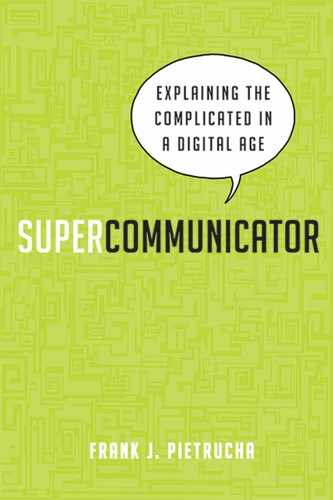Focus on Clarity
In 2012 the U.S. Patent Trademark Office (USPTO) received 576,763 patent applications.12 Former Patent Commissioner Bob Stoll tells me a significant number of these were returned to sender because of issues concerning “improper idiomatic English.”13 That is, the patent inspectors couldn't understand the submission. It could be a translation issue—many applicants are non-native English speakers—but too often the problem is that the technologies or products in review aren't properly explained. Inventors spend time, money, and effort building new ideas, but don't always invest the effort to deliver a clear explanation of them. Applicants must feel frustrated when their patents are delayed on account of poor communication. Patent delays are costly mistakes that can set your business back. It's even more painful when you realize these errors could have been avoided if a qualified writer spent just a few hours cleaning up your application.
Nothing kills good ideas like poorly written text. You could have found the cure for cancer or an alternative power source, but if you can't articulate your concept clearly and intelligibly, you're going to have a much harder time getting people to believe your claim. The same holds true for speaking; the fussier you make your presentation, the harder it will be for people to follow. There are lessons to be learned for presenters in this chapter, but our primary focus is on bringing clarity to your writing.
In the previous chapter we examined how right-sizing content for your audience is a critical factor in communicating complicated concepts. But just because you have the correct amount of targeted content doesn't mean you're finished. Your ideas must be molded into a product, like a document or web block, in a way that informs your audience with clarity and ease. You may have simplified your content significantly by leaving out extraneous details. Now your task is to put your ideas into words that will seamlessly deliver meaning to intended parties.
While most everyone knows how to write, many don't know how to write well. Your eighth grade teacher wasn't kidding when she tried to explain to you the importance of the inflections and syntax of language. Be mindful of bad grammar and other foibles—they can easily sour a reader's perception of your ideas. If you are prone to make grammatical mistakes, always make sure someone checks your work before it circulates. But even if your content is error free, your audience still might not be able to make any sense of your discussion.
In our rush to get more information quickly, we have less tolerance for roadblocks that prevent us from getting to the meat of the matter. “Don't slow me down with big vocabulary words,” or “Don't use jargon that only geeks can understand,” is the prevalent feeling among today's digital citizens. So while the rules of writing simply haven't changed, our expectation that content providers offer us clarity is higher. It is your responsibility to make sure that your text is as effortless as possible for your reader. This means removing any roadblocks that slow down a fluid exchange of ideas.
Critically look at your content. Are you using big words unnecessarily? Are your web pages filled with jargon? Are your sentences and paragraphs too long? All of these and other factors can bog down your reader. If you aren't sure your writing is sufficiently simple, check out a tool in Microsoft Word that helps you check up on the readability of your writing. Paul Smith, author of Lead with a Story, told me about this feature that calculates your Flesch-Kincaid Grade Level automatically. It's simple. Depending on the version of Word you're using, select “Check grammar with spelling.” Click on “Options,” then find and click on “Show readability statistics.” After you run through the spell and grammar check, you'll see a pop-up that provides useful information about the complexity of your document. You can see what grade level you're writing at, as well as determine your Flesch-Kincaid Grade Level.
Many business people write at college level—somewhere between grades 12 and 15. That's too challenging for most audiences even if they are college graduates. You want to shoot for somewhere between grade level 8 and 10 on this scale when communicating to a professional audience. The New York Times and similar publications typically score in this range. Although many Times readers are capable of reading at a higher level, the Times knows that writing in a simple style will make their stories easier to understand. If you prefer to use the Flesch-Kincaid scale, you should aim for a score of higher than 60 percent. Neither of these scales measures the intelligence of your writing. They merely point out if your text is too complicated. Your ideas may be great, but the way you're explaining them is too fussy.

